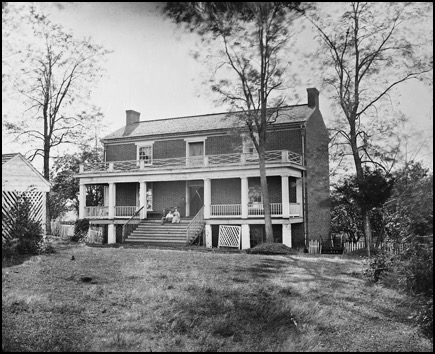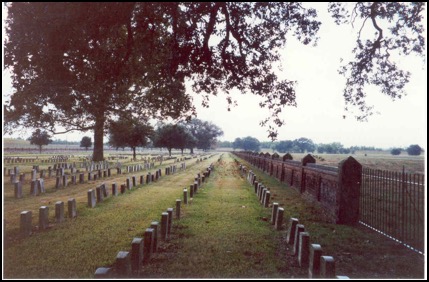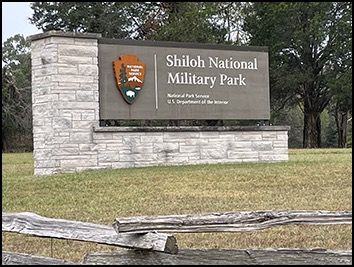Battlefield
Stillness At Appomattox
Bob and I were staying at a lovely B&B just outside Charlottesville, VA while doing a drive around northern Virginia. We were seeing historic sights, beautiful countryside, and battlefields. At one breakfast there, we heard another party at the B&B talk about a visit to the Appomattox battlefield area and where Lee surrendered to Grant at the end of the Civil War. They commented that the area seemed to have an extra "quiet" and "hush", likely a stillness to it due to the significance of the surrender. Bob and I talked and decided it was worth a 3 hour drive to the location to see it. It was definitely worth a visit and there was a stillness to it.
Here is info on the site from the list of battlefields to visit:
No battlefield tour is complete without a visit to the village of Appomattox Court House, the place where the American Civil War ended on April 9, 1865. After a series of battles known as the Appomattox Campaign, which engaged almost 90,000 soldiers, Confederate General Robert E. Lee officially surrendered to Union General Ulysses S. Grant at McLean House, bringing an end to the war. The park covers approximately 1,800 acres and encompasses many of the village’s original structures and over two dozen restored buildings, including a reconstruction of the McLean House. Visitors can walk on the same dirt road where Lee’s army folded their flags, visit the Confederate cemetery, and discover the quaint village of Appomattox Court House.
Our photo of McLean House.

An old photo from an internet site.

Here is info on the site from the list of battlefields to visit:
No battlefield tour is complete without a visit to the village of Appomattox Court House, the place where the American Civil War ended on April 9, 1865. After a series of battles known as the Appomattox Campaign, which engaged almost 90,000 soldiers, Confederate General Robert E. Lee officially surrendered to Union General Ulysses S. Grant at McLean House, bringing an end to the war. The park covers approximately 1,800 acres and encompasses many of the village’s original structures and over two dozen restored buildings, including a reconstruction of the McLean House. Visitors can walk on the same dirt road where Lee’s army folded their flags, visit the Confederate cemetery, and discover the quaint village of Appomattox Court House.
Our photo of McLean House.

An old photo from an internet site.

Comments
Chalmette Battlefield Next
27/02/24 11:07 Filed in: History
Another one of the six battlefields one can visit and we have is in Louisiana, just outside New Orleans…
Located downriver from New Orleans, Chalmette Battlefield was the site of the last great battle of the War of 1812, fought between the U.S. and Great Britain. Although the Treaty of Ghent was signed in late 1814, the war continued. On January 8, 1815, General Andrew Jackson assembled troops from across Louisiana and the southeastern U.S. to defeat the British military and prevent them from gaining control of a critical port on the Mississippi River. The Battle of New Orleans was hailed as the final victory in the “Second War of Independence,” and for decades it was celebrated as a national holiday, much like the Fourth of July. A visit to Chalmette Battlefield offers the chance to walk in the footsteps of General Jackson (who went on to become the seventh U.S. President) and his troops. It contains a reconstructed American rampart, an original home from the 1830s, and the stunning,100-foot-high Chalmette Monument. Delve further into the history of the battle site via films and exhibits at the visitor center, where you’ll find outdoor exhibits, self-guided tours, and daily ranger talks. Also of interest is Chalmette National Cemetery: Established during the Civil War in 1864, it shelters more than 14,000 graves of Americans, dating from the War of 1812 to the Vietnam War.

Located downriver from New Orleans, Chalmette Battlefield was the site of the last great battle of the War of 1812, fought between the U.S. and Great Britain. Although the Treaty of Ghent was signed in late 1814, the war continued. On January 8, 1815, General Andrew Jackson assembled troops from across Louisiana and the southeastern U.S. to defeat the British military and prevent them from gaining control of a critical port on the Mississippi River. The Battle of New Orleans was hailed as the final victory in the “Second War of Independence,” and for decades it was celebrated as a national holiday, much like the Fourth of July. A visit to Chalmette Battlefield offers the chance to walk in the footsteps of General Jackson (who went on to become the seventh U.S. President) and his troops. It contains a reconstructed American rampart, an original home from the 1830s, and the stunning,100-foot-high Chalmette Monument. Delve further into the history of the battle site via films and exhibits at the visitor center, where you’ll find outdoor exhibits, self-guided tours, and daily ranger talks. Also of interest is Chalmette National Cemetery: Established during the Civil War in 1864, it shelters more than 14,000 graves of Americans, dating from the War of 1812 to the Vietnam War.

Six Must See Battlefields
26/02/24 18:02 Filed in: History
While reading through a Daily Passport email, one of their story leads was about six must-see battlefields in the United States. We have visited all six at some point. I will start with the last one we visited last October, Shiloh Battlefield, located in southern Tennessee just over the Tennessee-Mississippi border. The largest loss of life in a battle in the U.S. and in some respects a draw between the Union and Rebel forces.
From the article:
The Battle of Shiloh, also known as the Battle of Pittsburg Landing, was one of the most significant battles in the Mississippi Valley Campaign of the Civil War. The Union’s victory on April 7, 1862, came at a high cost, resulting in more casualties than in all of America’s previous wars combined. Occupying over 5,000 acres, Shiloh National Military Park offers visitors the chance to discover several historic sites. These include the Corinth Battlefield Unit, which preserves the Siege and Battle of Corinth, and the Shiloh National Cemetery, the resting place of around 4,000 fallen soldiers. Also found here are the Shiloh Indian Mounds, an archeological remnant of the South Appalachian Mississippi culture that lived in the area around 1200 CE. A great way to explore the park is by driving its 12.7-mile, 22-stop self-guided tour of the battlefield. Alternatively, visitors can hike along trails or ride a bicycle or e-bike around the paved roads. Whichever way you get around, you’ll get the chance to spot local wildlife, including 186 bird species, such as the majestic bald eagle and great-horned owl.

From the article:
The Battle of Shiloh, also known as the Battle of Pittsburg Landing, was one of the most significant battles in the Mississippi Valley Campaign of the Civil War. The Union’s victory on April 7, 1862, came at a high cost, resulting in more casualties than in all of America’s previous wars combined. Occupying over 5,000 acres, Shiloh National Military Park offers visitors the chance to discover several historic sites. These include the Corinth Battlefield Unit, which preserves the Siege and Battle of Corinth, and the Shiloh National Cemetery, the resting place of around 4,000 fallen soldiers. Also found here are the Shiloh Indian Mounds, an archeological remnant of the South Appalachian Mississippi culture that lived in the area around 1200 CE. A great way to explore the park is by driving its 12.7-mile, 22-stop self-guided tour of the battlefield. Alternatively, visitors can hike along trails or ride a bicycle or e-bike around the paved roads. Whichever way you get around, you’ll get the chance to spot local wildlife, including 186 bird species, such as the majestic bald eagle and great-horned owl.

Shiloh Civil War Battlefied
Bob and I just got back from Memphis Tennessee earlier this week. One week ago we drove 2 hours east to the Shiloh National Park Battlefield near Shiloh TN. This covers a lot of area around the town and west of the Tennessee River. This is probably 15-20 miles north of Corinth, MS where the Confederate forces were bivouacked. Corinth was a major railroad connection in the South and one of the targets of the Union army under General Grant.
We had a great trip and saw a bit of the area while there. We also watched a 30 minutes film at the Visitor's Center while there.
Here is the sign for the entrance to the visitor's part of the park.

We had a great trip and saw a bit of the area while there. We also watched a 30 minutes film at the Visitor's Center while there.
Here is the sign for the entrance to the visitor's part of the park.


